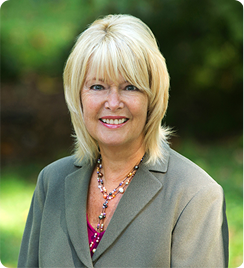
Many 50 something people have had it with their jobs. What once was interesting and challenging has now become burdensome. You long for a change, but fear the consequences.
Who will hire an older worker? What do you want to do next? Where can you go? And who will match your salary and benefits? These are legitimate questions that require creative solutions. Though eager for a change, you want to control the outcome. You want something better for yourself, not worse. But you fear you will regret your moves.
Unpleasant work is at least familiar. With new work you don’t know what lies ahead. It’s unlikely at 50 or 60 that you will find a job posting that sounds like it’s exactly made for you. But at first that’s what you might do…look at job listings.
Maybe that kind of search is how you began your career. But it’s rarely how you will progress now. The hard truth is that the opportunity you seek isn’t out there. You have to design it. And most people hate to hear that. They want an easier way. Surely you’ve earned it. You want people to call you with an opportunity.
Of course there are still government and private jobs that are listed online. But even those require making connections and becoming noticed. And you wonder, do they already have someone in mind for this position? How do you become that someone?
Olivia has climbed her ladder successfully and is paying the price for it. She is stressed, overweight, has high blood pressure, her marriage is rocky and she finds little time for family or friends. With achievement at work comes more responsibility, greater expectations, higher stakes. Olivia wishes she could disappear sometimes, but doesn’t even take her vacation time. Who would carry the ship when she is gone? If they mess things up, she’ll have more to clean up when she returns. It’s not even worth it.
Once you have reached the top, it’s hard to back down. That’s not the way it works, or is it? What if it was customary to switch gears, change priorities, walk away and care less for the title and salary and do more of what you want?
Even after working for years, many of us don’t know what we want. You know you don’t relish what exists, but have little idea of what’s possible. And you have lots of doubts about your ability to reinvent.
Reinvention can be a lonely road. Thinking about something new while you are struggling with huge responsibilities is daunting. You wonder if it’s easier to suffer through your career until the magic date of “retirement”. But then you’re faced with another transition. What will you do with yourself then? Better to figure out your path as early as possible and act on it, than live an unauthentic life. And it’s never one path, but many.
“The only place where your dream becomes impossible is in your own thinking”
Robert Harold Schuller
Gathering together all your lessons learned, your self knowledge and your courage, it’s time to have a serious talk. What’s the cost if you go on like this 10-20 more years? Do you wait until your later years find true satisfaction? Some options are to make things better where you are, get a side gig you love or make a switch.
Figuring out the basic essentials you require to live a satisfied life and tapping into your curiosity can lead you on a journey of investigation. What do you enjoy? If you didn’t have to work, what would you do? What skills do you want to share? Who needs your help? What environment calls you? Getting these answers gives you a direction.
Once you have a direction you can find others who share your interests, whether it’s groups, institutions, associations. Go out and meet those people. Learn how they are contributing. Start involving yourself. An attitude of possibility, positivity and puzzle solving will serve you as you enter your transition.
Write your own job description. Be brave, uncensored, honest. Then find ways to carry it out. It may not come in a package with everything tied up in a box. Instead, think outside the old boxes. Find new ways to live differently. Head in a new direction that builds on the past but doesn’t replicate it.
“Thinking will not overcome fears but action will”
William Clement Stone
Ready to start?
Discover your target
Where’s the community?
Learn from them
Start to engage
Create your own opportunities
Leap onto the path and see you there!










